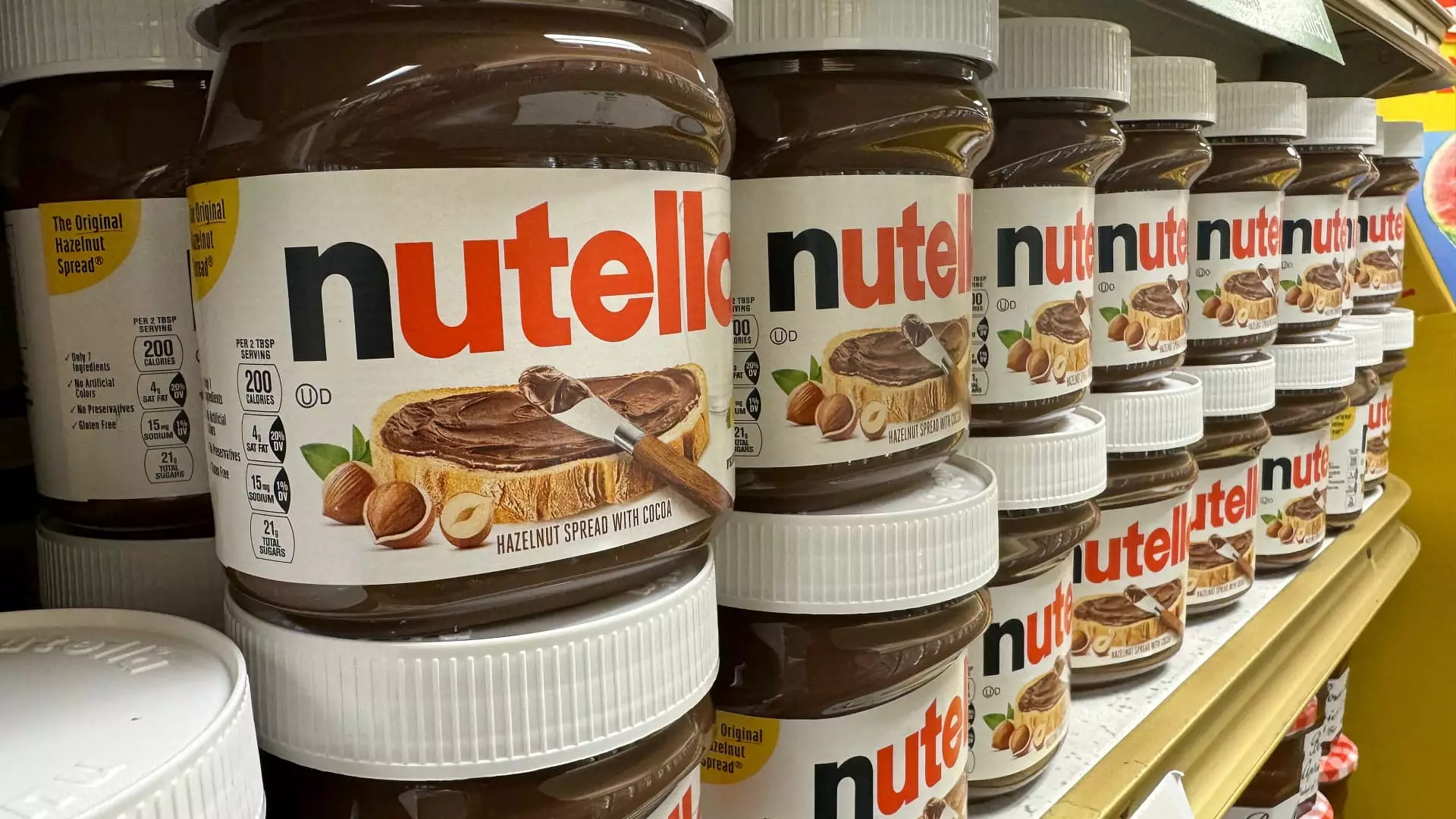In a candy landscape where consumer preferences shift almost overnight, Ferrero North America is daring to not just compete but redefine the rules. Their recent push to introduce peanuts into Nutella, turn Ferrero Rocher into an innovative square format, and add Dr Pepper flavor to Tic Tacs is not just a bold move; it’s a statement of intent. The upcoming Sweets and Snacks Expo in Indianapolis showcases Ferrero’s largest range of product launches yet, reflecting a strategic pivot to elevate its brand presence in the American market. This is Ferrero’s moment of reinvention, and the stakes have never been higher.
Ferrero is reaching for more than just market share; they are asking American consumers to embrace new iterations of beloved classics. The introduction of Nutella Peanut, which merges traditional cocoa and hazelnut flavors with roasted peanuts, highlights an aggressive approach toward taste innovation. It’s a gamble that could either win over the masses or falter among die-hard traditionalists.
A Strategy Rooted in Localization
Founded in Italy but now operating globally from Luxembourg, Ferrero is on a mission to resonate more deeply with U.S. consumers. The company’s great American adventure began nearly fifty years ago, yet it has really ramped up attention and investment in the last decade. Through a series of acquisitions—like Fannie May and Wells Enterprises—Ferrero has grown to become the third-largest candy company in the U.S., trailing only industry titans Hershey and Mars. However, despite this growth, Ferrero still holds only 2% of the U.S. chocolate market share—a figure that pales in comparison to the double digits enjoyed by its competitors.
To carve out its niche, Ferrero’s team, led by President Michael Lindsey, underscores the importance of localization. “You do have to Americanize it at some point,” Lindsey emphasized, capturing the essence of their strategy. As they navigate the fine line between preserving brand integrity and forging a connection with American consumers, this localization is essential to growth.
The Pressure of Competition
Ferrero’s entire strategy seems rooted in urgency, especially as larger publicly traded candy companies like Hershey face dwindling sales. Their reliance on innovation, combined with recent growth figures—3.4% dollar growth in their U.S. segment—reflects a hopeful outlook. But, with Hershey’s classic namesake brands and Mars’ iconic M&M’s capturing the hearts of consumers, Ferrero is in a race against time and taste buds.
Ferrero Rocher’s pivot to a square shape and a new diverse flavor line-up, including milk, dark, and caramel, not only refreshes a legacy product but also attempts to fulfill the market’s appetite for novelty. This is an attempt to bridge the gap and cement Ferrero as a leader rather than a lineup of brands in a competitive market.
The Investment in Innovation
Perhaps what stands out the most in Ferrero’s recent maneuvers is their hefty investment in infrastructure. A commitment of $75 million towards the manufacturing of Nutella Peanut in Franklin Park, Illinois, signals a long-term play. Notably, this investment predates the recent U.S. tariffs on numerous imports, illustrating a dedication to localize operations and supply chains. This foresight could indeed be the linchpin that differentiates Ferrero from its competitors who might struggle with global supply issues.
Hats off to Ferrero for also sourcing its hazelnuts from Oregon, showcasing a sincere effort to integrate local agriculture into its supply chain. This gesture not only supports local farmers but also aligns Ferrero’s products with the rising consumer demand for local sourcing—a trend that’s more relevant than ever in today’s marketplace.
Magnificent Marketing on the Horizon
Beyond product innovation and supply chain localization, Ferrero’s game plan further includes an expansive marketing push expected to roll out in 2026 at major sporting events. They are not just making candies; they are attempting to create a cultural presence in the lives of consumers. With hints at major marketing plans for the Super Bowl and the World Cup, Ferrero is poised to capture both the hearts and minds of consumers in pivotal moments of communal celebration.
This ambitious strategy could mark a turning point for Ferrero, transforming them from a primarily European confectionery company into a beloved American brand. Their actions signal to the confectionery market that they are coming not just to participate but to dominate—and that willingness to embrace risk and innovation is what could elevate Ferrero to the forefront of the U.S. candy industry.
As Ferrero experiments with flavors that cater to American consumer preferences, their ability to evolve in this dynamic space will be scrutinized closely. Whether these bold moves will pay off remains to be seen, but one thing is clear: Ferrero is not afraid to shake things up.

